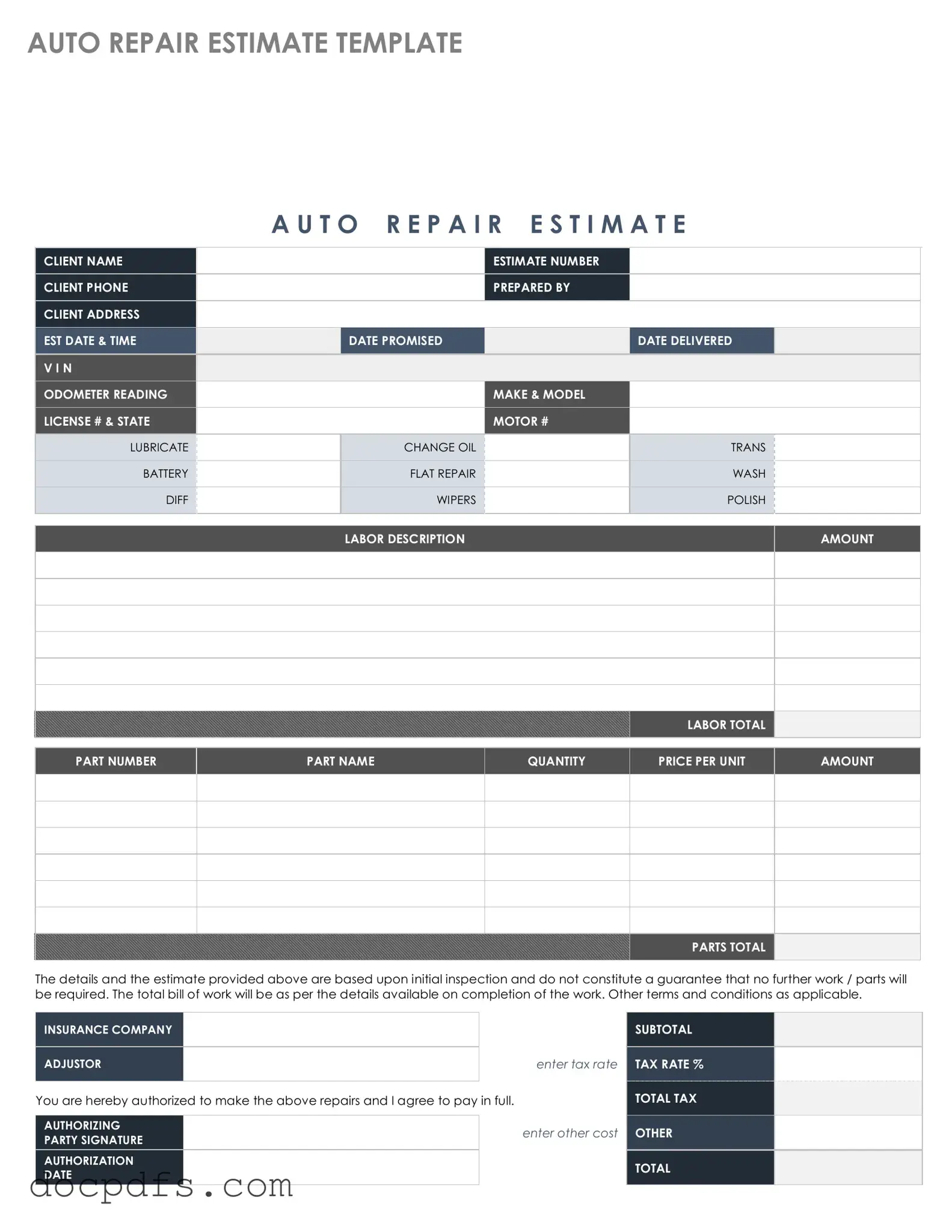Auto Repair Estimate Template in PDF
The Auto Repair Estimate form is a document that outlines the anticipated costs and services required for vehicle repairs. This form serves as a crucial tool for both customers and auto repair shops, ensuring transparency and understanding before any work begins. By providing a detailed estimate, it helps vehicle owners make informed decisions about their repairs.
Open Auto Repair Estimate Editor Now
